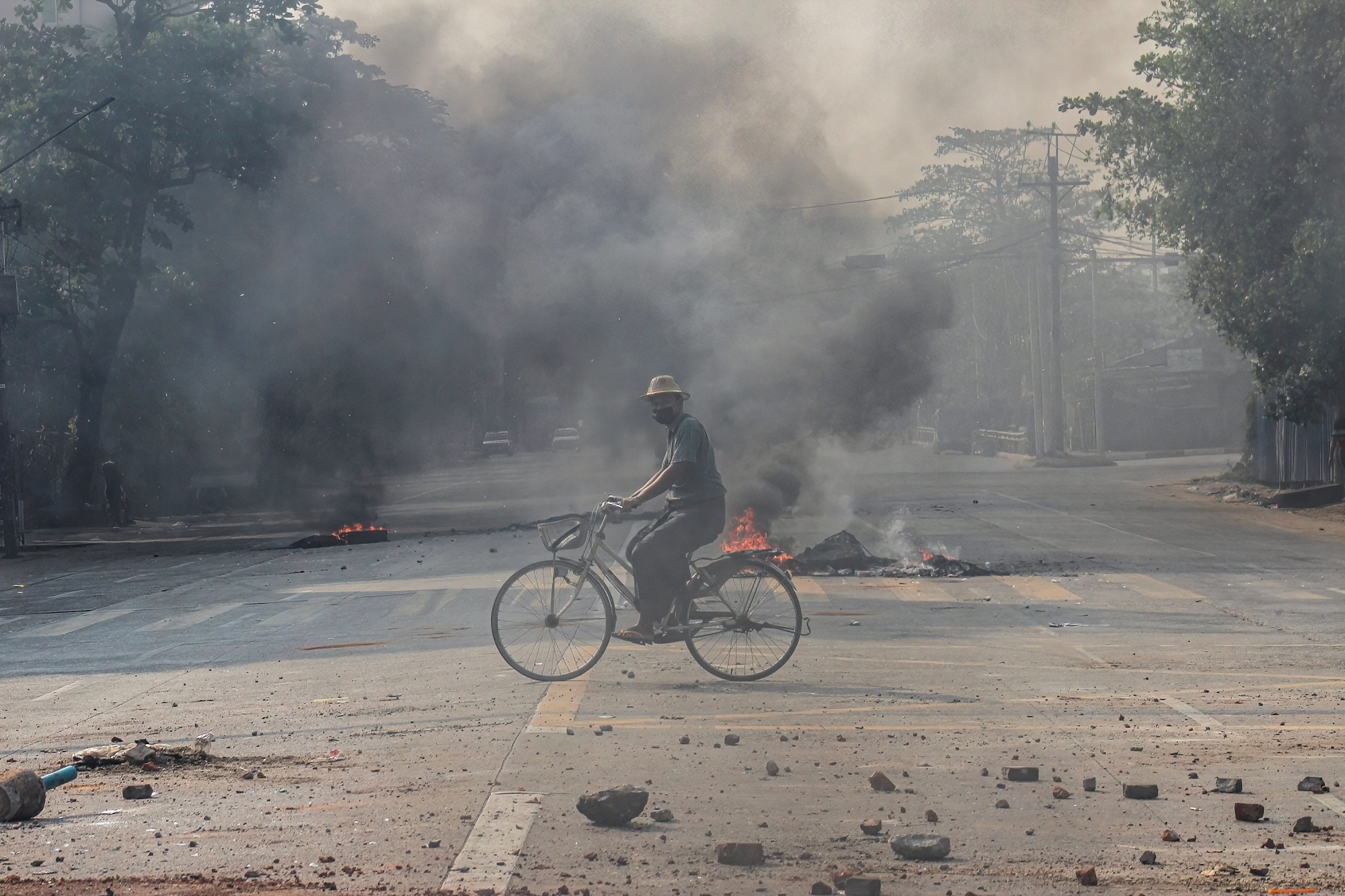Election Farce
Four years after seizing power in a coup, Myanmar’s military rulers continue their desperate yet failing bid to tighten their grip, this time by extending emergency rule under the pretext of preparing for elections.
Looking at the NUG, for months now, the shadow government has undertaken efforts in a bid for international recognition.

A cyclist rides past burning tires on the street during a demonstration against the military coup in Myanmar's Yangon. IANS
For 18 months now, there has still been no substantial progress for ways out of the Myanmar crisis. With the current geopolitical environment, the prospect of any meaningful resolutions remains challenging. When talking about Myanmar right now, there will always be news of arms confrontations between the Naypyidaw military authority, or Tatmadaw, and other armed groups, including its rival, the National Unity Government (NUG). The country is mounted with crises, while existing resolutions are still limited. Internally, Myanmar is divided with occupied zones. All conflicted parties have not shown any signs to talk with each other yet. The current trend is so pessimistic. Externally, there are responses by many actors in the region and across the world, especially on implementing the ASEAN Five-Point Consensus (5PC).
One year after the adoption of the 5PC, it is observed that ASEAN special envoy ~ especially during Cambodia’s ASEAN chairmanship – has tried put many efforts to fulfill key missions including stopping violence, promoting political dialogues among Myanmar stakeholders, and channeling humanitarian aids to those in need in Myanmar. We have seen visits and frequent engagements between the ASEAN special envoy and parties within Myanmar.
Advertisement
However, as the Myanmar crisis is complex involving many layers of conflicts, and as the Tatmadaw has not shown concrete commitment to cooperate with ASEAN, the momentum to meaningful breakthroughs is still far from reach. Recent events, like the execution of four Myanmar democratic activists by the military authority, triggered disappointment among ASEAN leaders. In August this year, Prime Minister Hun Sen even suggested ASEAN “rethinks about our role vis-a-vis ASEAN’s 5PC” if the military carries out more executions. It is obvious that the domestic situation in Myanmar posed a huge concern for the country and ASEAN.
Advertisement
What’s more is that the latest trend of geopolitical landscape could add another layer of concern. Major powers keep confronting with each other in the global arena both with political rhetoric and flexing their military muscles. As the world becomes entangled in more intensified competitions by superpowers, internal parties within Myanmar seem to pick sides against each other. The Tatmadaw becomes closer and closer to China and Russia. While the other ASEAN member states have a cautious stance on recent episodes of global events, Myanmar military authority openly supports Russia in the war in Ukraine, and China over the Taiwan Crisis. In return, the two major powers are among the few countries left that have openly and actively worked with the Myanmar military, from military to economic engagements. Further than that, there are reports accusing China and Russia of supplying weapons to the Tatmadaw.
Looking at the NUG, for months now, the shadow government has undertaken efforts in a bid for international recognition. Frequently, it is observed that the NUG’s “foreign minister” and other officials have interacted with the West. Unfortunately, this group so far only gets moral support from the US and its allies. It is often seen that the US and others have been very vocal on calling for more pressure on the Myanmar military, yet it does not go further beyond that.
Advertisement